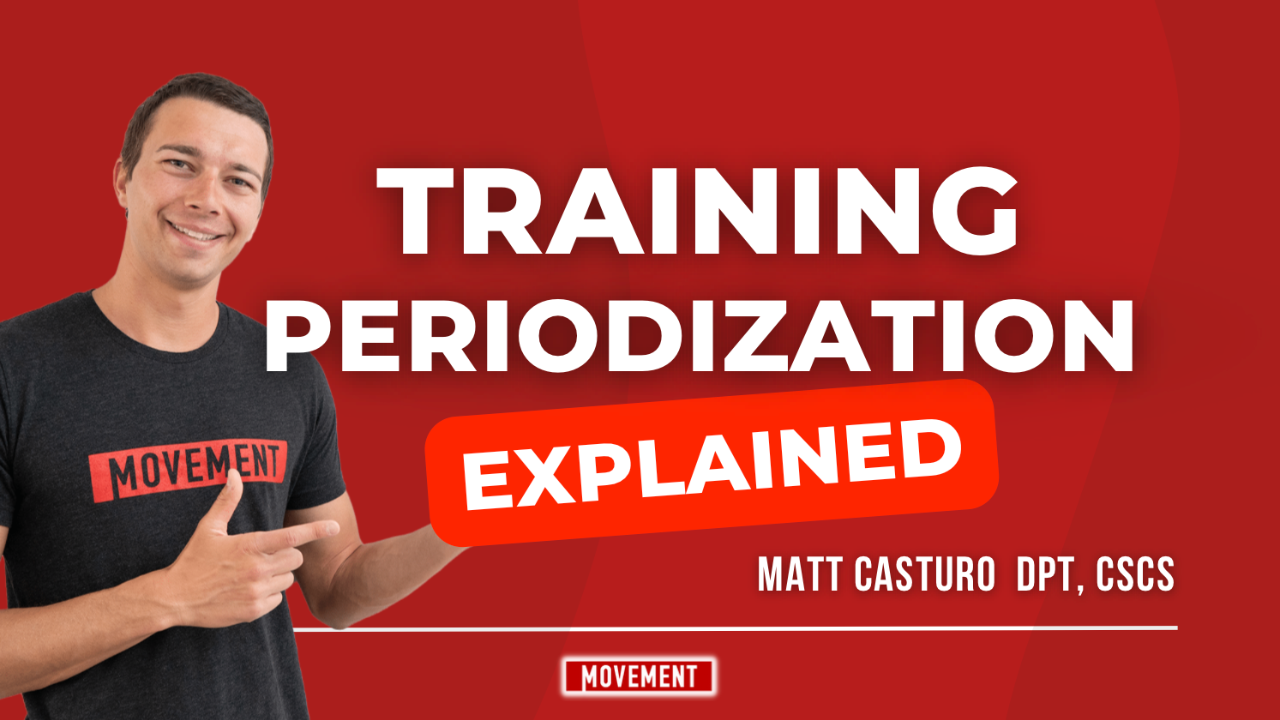Training Periodization Explained
Aug 07, 2023
Edited by: Danielle Abel
If you're just starting out coaching, you might be familiar with what training periodization is, but you may not have experience actually creating a program for a client or clients that includes more than 1 session at a time, or possibly even more than 1 month at a time.
The biggest thing to think about when it comes to periodization is "what is the overarching goal?"
The second biggest thing is to not overthink it. As you gain experience, you'll be able to program more efficiently and feel more confident in your programming as well. Everyone starts somewhere, and it's likely your athletes won't know if you're still learning.
Team Sport Athletes
If you're a coach working with athletes in high school or college, the overarching goal for you may be to improve your athlete's sport performance. If this is the case, then you will likely use a seasonal approach to training periodization.
- Off Season - the timeframe in which athletes are not competing in their sport(s)
- Pre Season - the timeframe in which athletes are training and practicing but not necessarily competing in their sports
- In Season - the timeframe in which athletes are competing in their sports
If you know when athletes will compete, you can design their program around when their season starts and ends. For example, football players they'll likely be competing in the late summer and fall, so this will be considered their in-season. As strength coaches, we want athletes to train using a power-based approach to training in the in-season.
- Power Training - generally high intensity, low volume (1-3 sets, 3-5 reps)
For football players, after they're done competing, they will likely move into the off-season. during the off-season, most athletes will do general preparedness programs (GPP) and even hypertrophy programs with reps between 6-12, to help them gain muscle. Whereas in in-season, football athletes often transition to strength-based programs in which they're performing movements that promote the greatest amount of force production, using 1-3 sets and 1-6 reps.
For team sports, you will probably find that linear periodization works best for these athletes because of the predictable schedule they have. Linear periodization is simply a way to progress training to the point where intensity is high, and volume is low.
Individual Sport Sport Athletes
If you work with individuals who compete in individual sports, you may not necessarily take a linear approach. Some athletes might have multiple goals to be fast and to also be strong for example. In this case, you might use an approach like daily undulating periodization (DUP).
Daily undulating periodization doesn't necessarily work up towards a high intensity, and low volume peak. Instead, DUP varies the amount of volume and intensity throughout the week or throughout the training block. We find that picking a primary goal and a secondary goal to focus on can help you be more specific with training.
- September - Primary goal: Aerobic half marathon prep, Secondary goal: Vertical jump
Training throughout the month of September might look like easy aerobic on Monday, Tuesday, and Saturday followed by intense intervals on Thursday with Upper, Lower, and Full Body power sessions on Monday, Wednesday, and Friday.
By varying the amount of intensity and volume the athlete is experiencing throughout the week, you are promoting mixed adaptations of aerobic capacity as well as the neurological, muscular, and tendon strength power-based adaptations needed for vertical jumping.
Programming Terminology
When you're thinking about designing athlete's programs, think about not only the goal of the year-long program but also the program's timelines. In general there are 3 terms that are commonly accepted when referring to training periodization:
- Macrocycle - typically a year-long training plan
- Mesocycle - typically one block of training (4, 5, 6, weeks, etc.)
- Microcycle - typically one workout
We've found that it can be helpful to sketch out what the goals of each meso cycle might look like to help you focus your efforts when programming. Keep in mind, as you progress from cycle to cycle, you can always adjust training goals and variables based on your observations. Below is an example of what periodization might look like for both aerobic and strength-based goals.

Periodization Systems
There are a number of different training periodization systems out there like:
- Conjugate Method (Ex: Westside Barbell)
- Jim Wendler’s 5/3/1
- Joe Kenn’s Tier System Training
- Cal Dietz’ Triphasic System
- French Contrast Training
None of these systems are better than the others; it really comes down to the athletes that you work with and what you prefer to program. We've found that other coaches, ourselves included, tend to use a variety of different systems, and that's ok too! At the end of the day, it comes down to getting your athlete's results, listening to their feedback, and making adjustments to your approaches as you learn and grow.
Support & Courses Available
Ready for even more support? Our Program Design 101 Course teaches you exactly how to organize an annual training plan and provides sport-specific examples, and even includes done-for-you programming templates by phase. Click the link here to check it out.
Stay connected with news and updates!
Join our mailing list to receive the latest news and updates from our team.
Don't worry, your information will not be shared.
We hate SPAM. We will never sell your information, for any reason.

